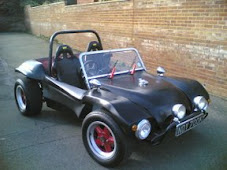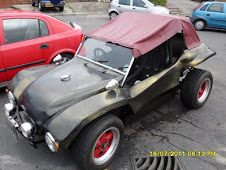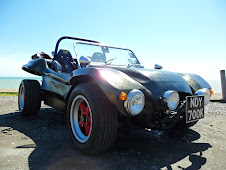
The OMP seat sub frames where constructed from two aluminium right angle s and four aluminium posts each had a series of different bolt holes to take the supplied bolts. I had additionally purchased an OMP sliding mechanism for the seats, which would allow the seats to move forward and backwards when in situe. It was clear early on that the original seat runners were in the way and would have to come out. The only questioned seemed to be how?
._tn150.jpg) Without having any gas cutter in the garage the only other option seemed to be an Angle grinder. I ensured that the brake line on the drivers side was tucked up and away from damage unclipping it through its section. Always ensure you use protective equipment with an angle grinder leather gloves , ear defenders and glasses are a minimum as this is a very confined area and the sparks from the steel bounce around the body. It is also quite helpful I have found in the past to have a fire extinguisher close to hand.
Without having any gas cutter in the garage the only other option seemed to be an Angle grinder. I ensured that the brake line on the drivers side was tucked up and away from damage unclipping it through its section. Always ensure you use protective equipment with an angle grinder leather gloves , ear defenders and glasses are a minimum as this is a very confined area and the sparks from the steel bounce around the body. It is also quite helpful I have found in the past to have a fire extinguisher close to hand.I started by using a metal cutting disk to cut off the majority of the seat runner. A new cutting disk gives quite a good bit of reach and working eliminating section by section you can gain access to other parts that are hard to get the grinder into.
The next section is the arduous one. It took about a day to grind the rest of the material out and off the chassis. It is also important to stress here that even if its a sunny day when doing this ensure your skin is covered, my girlfriend said she was finding small lumps of metal in my necks for months afterwards.
 Two days later and I had removed the seat runners from the floor pan. I had not envisaged how strongly they had been attached, this was something to remember when fitting the new sub frames.
Two days later and I had removed the seat runners from the floor pan. I had not envisaged how strongly they had been attached, this was something to remember when fitting the new sub frames.With the runners removed the area was painted in red oxide paint and then a gray primer. The heat transfer through the floor pan had removed the paint from the underneath as well. This had to be cleaned up and was painted the same as top. A top coat paint was added and the runners looked like they had never been there.
The new OMP runners seemed very odd in construction as all the pictures I had showed the alluminium posts facing downwards. This meant that they was impossible to fix to the seats and I soon realized that they were shown in the pictures upside down, after figuring that out they bolted together very easily, there were some questions about the heights of the posts but I figured out the best method was to bolt everything onto the seats and they try fitting the seat/OMP Runner into the floor pan area. The Area is quite tight and you must pay attention to the brake line that runs through and along the tunnel. The Seats needed to be placed quite far back as I am 6ft 2" and the rear inside post needed to be shortened to allow the seat to fit into its proper positions. Unfortunately I felt it necessary to shorten the front posts as well as I was not aware that a reclined seat position would give better control of the vehicle. This would mean I need to revisit the seat installation at a later date when I had purchased another set. In the mean time not knowing this vital information The seats bolted in solidly with a large metal washer on the other side of the chassis.
Parts Used:
OMP HC655 Seat Runners
OMP HC654 Aluminium Seat Subframes.
M8 x 50 , 8.8 Gauge Stainless bolts and nyloc nuts.




































































